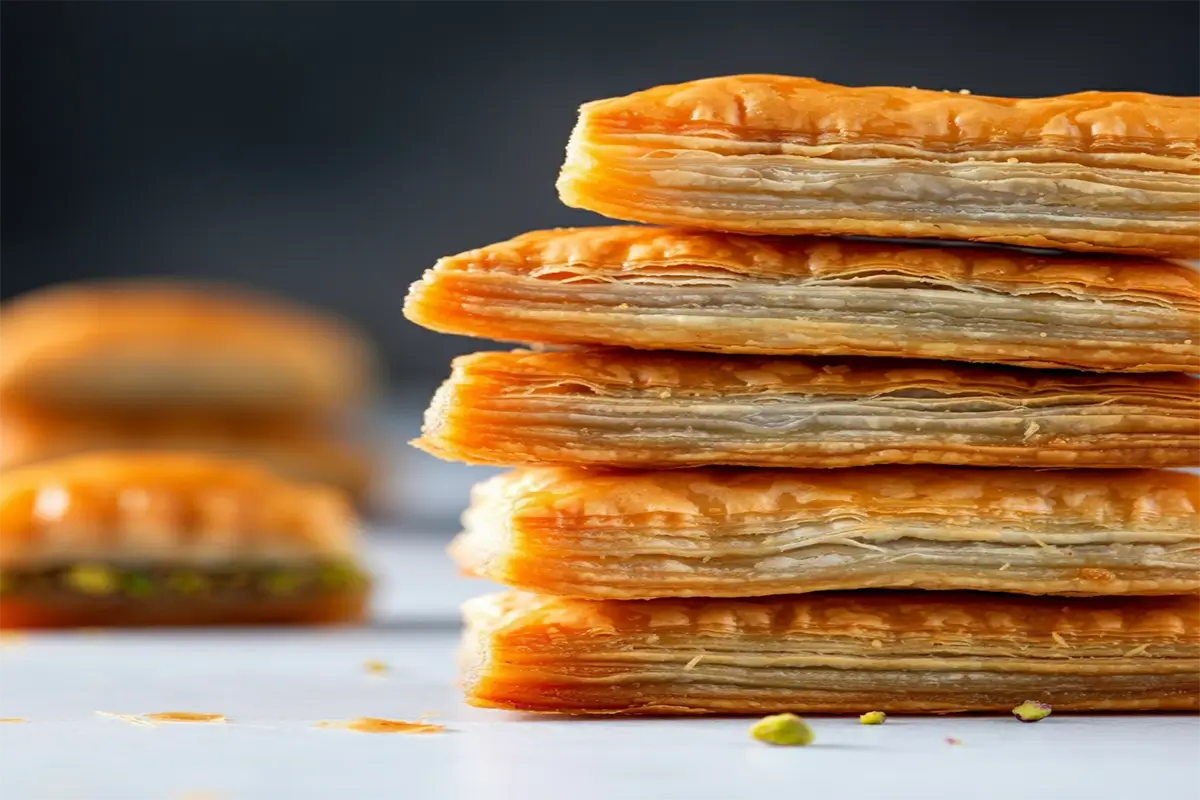Introduction: The Quest for Perfect Gluten-Free Pastry
Picture this: you’re in the kitchen, dreaming of that first bite of a perfectly flaky pastry. It’s golden, light, and, of course, gluten-free. For anyone with gluten sensitivities, finding a pastry that’s both delicate and satisfying can feel like an impossible dream. Traditional pastries rely heavily on gluten to create that elastic, chewy texture. But gluten-free enthusiasts don’t need to sacrifice taste or texture when making pastries at home. With the right ingredients and techniques, you can enjoy a gluten-free pastry that’s not only beautiful but just as delicious as its traditional counterpart. Here’s how to make it happen, with step-by-step guidance and pro tips to help you succeed.
Benefits of gluten free puff pastry
Gluten-free puff pastry offers several benefits, especially for those with gluten sensitivities or celiac disease.
Traditional puff pastry relies on gluten to create those classic, flaky layers, but gluten-free puff pastry can deliver a similar texture with a few key adjustments in ingredients.
By using gluten-free flour blends and specific techniques, this pastry remains light, crispy, and delicious without the gluten.
Not only is it safe for those with dietary restrictions, but gluten-free puff pastry is also a versatile base for both sweet and savory dishes.
From tarts and turnovers to pot pies and strudels, gluten-free puff pastry opens up endless possibilities in the kitchen while catering to a variety of dietary needs.
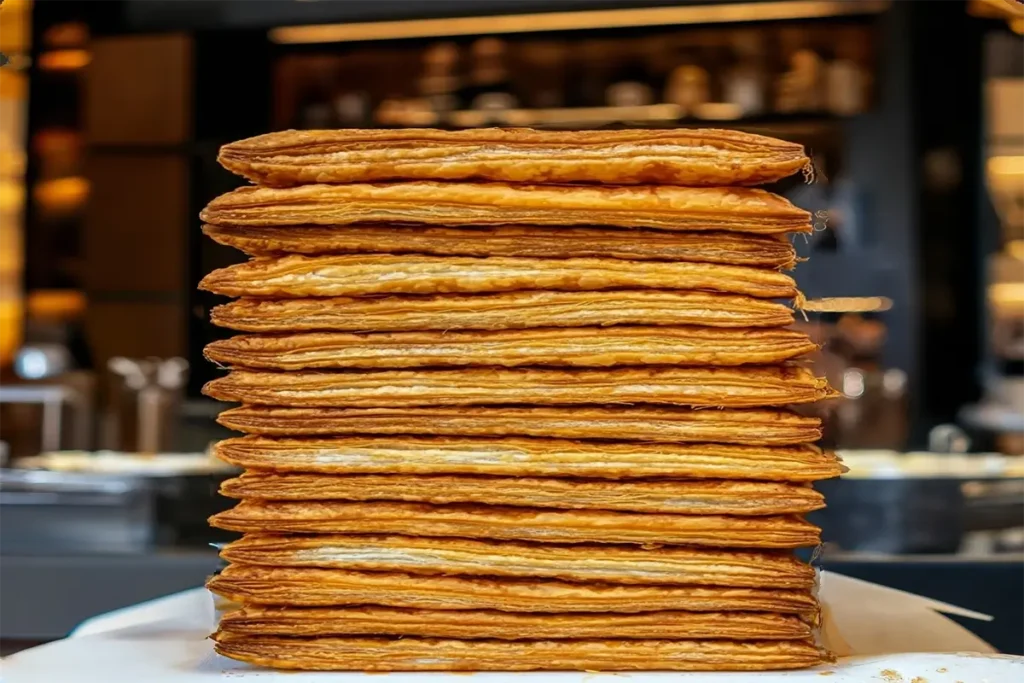
Table of Contents
Understanding Gluten-Free Pastry Basics
What Makes Gluten-Free Pastries Unique?
Gluten-free baking is a science and an art. The absence of gluten—a protein found in wheat, barley, and rye—means we’re working with alternative flours that don’t have the elasticity gluten provides. Gluten gives doughs a stretchy, smooth consistency, which allows them to hold air and create that light, flaky texture we love in pastries. So, what’s the secret to making a gluten-free pastry work?
The trick is using the right combination of flours and binders. Instead of relying on one flour, gluten-free baking often involves a blend, each flour bringing a different benefit. Rice flour, for example, has a neutral taste, while almond flour adds richness. To replace gluten’s elasticity, binders like xanthan gum or psyllium husk are essential; they help hold everything together and give your pastry a slightly stretchy feel, which is essential for getting those flaky layers.
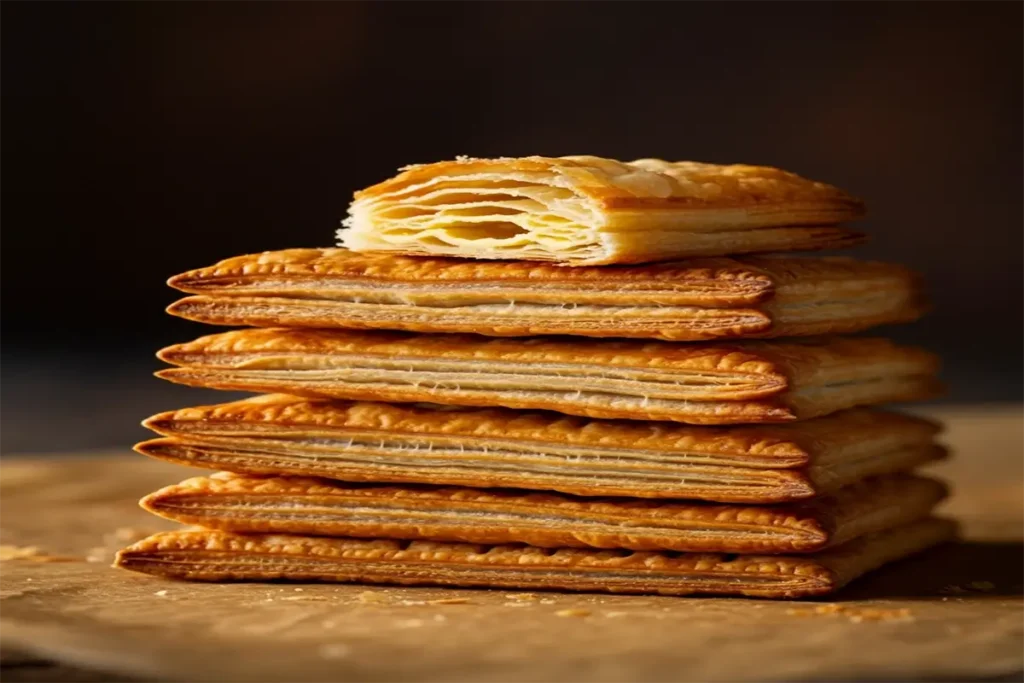
Essential Ingredients for Gluten-Free Pastry Perfection
Let’s talk ingredients. For a successful gluten-free pastry, you’ll need:
- Flours: Common choices include rice flour, almond flour, tapioca starch, and potato starch. Combining these allows for a balanced taste and texture.
- Binders: Xanthan gum, guar gum, and psyllium husk act as stand-ins for gluten, helping the dough to hold together.
- Fat: Cold butter is key to achieving a crunchy texture. Use chilled fat cubes to create layers.
- Liquid: Ice water keeps the dough manageable, and a bit of vinegar or lemon juice can help prevent the dough from becoming too tough.
Quick Comparison of Gluten-Free Flours
Here’s a handy table to guide you on flour choices and uses:
| Flour Type | Texture | Best Uses |
|---|---|---|
| Rice Flour | Light | General baking, crusts |
| Almond Flour | Nutty | Adds richness, great for desserts |
| Tapioca Starch | Chewy | Binds and adds elasticity |
| Potato Starch | Neutral | Adds fluffiness |
Step-by-Step Guide to Making Flaky gluten free puff pastry
Prepping Your Ingredients
The secret to a light, flaky crust lies in cold ingredients and minimal handling. When making gluten-free pastry, keep your butter in the fridge until you’re ready to use it. Cold fats are less likely to melt into the dough, which helps create distinct layers that produce that delicate, flaky texture.
Measure your flour precisely to avoid a heavy or dry dough. Gluten-free flours absorb moisture differently than wheat flours, so you may need to experiment a bit to find the right consistency.
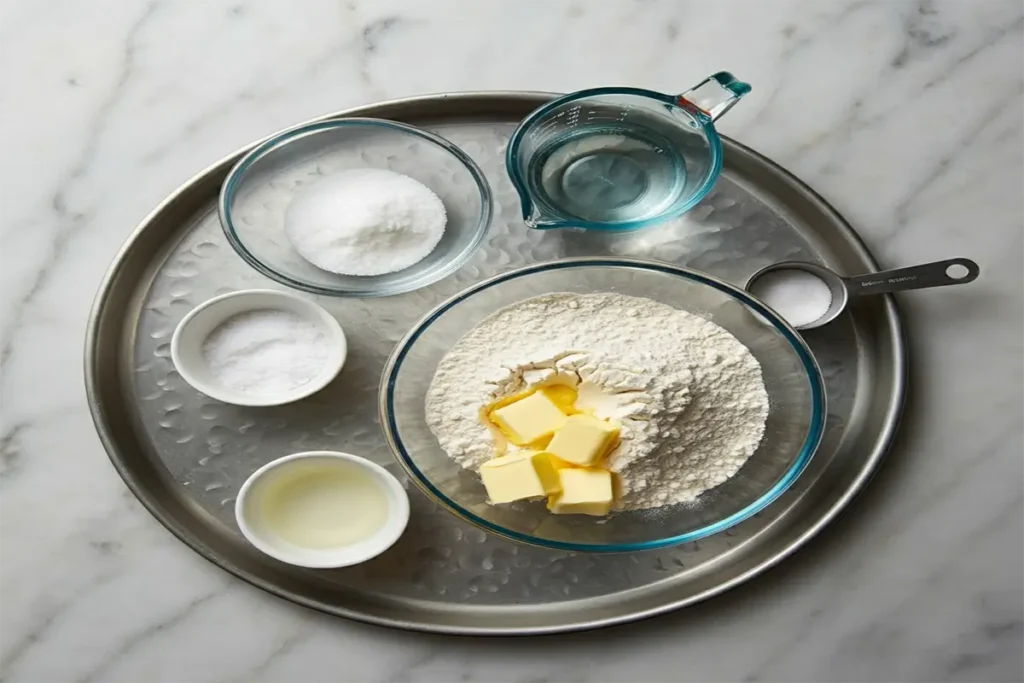
Mastering the gluten free puff pastry Technique
Here’s where things get fun. Start by blending your flour blend with a bit of xanthan gum. Cut in the cold butter until the mixture resembles coarse crumbs. Then, slowly add ice water, one tablespoon at a time, until the dough holds together but isn’t sticky.
Roll out the dough gently. If it’s crumbly, a quick chill in the fridge can help make it more workable. Handle it as little as possible; overworking gluten-free dough can make it tough rather than tender.
Troubleshooting Common Issues in gluten free puff pastry
- Dry Dough: If the dough cracks when rolled, try adding a bit more water or a teaspoon of oil.
- Lack of Flakiness: Ensure the butter is cold and that the dough has chilled before baking.
- Crumbly Pastry: Increase the amount of binder, like xanthan gum or psyllium husk.
Recipe for a Delicious, Flaky gluten free puff pastry
Ready to make your own gluten-free pastry? Here’s a tried-and-true recipe to get you started.
Ingredients
| Ingredient | Quantity |
|---|---|
| Gluten-free flour blend | 2 cups |
| Xanthan gum | 1 tsp |
| Cold butter | 1/2 cup (cubed) |
| Ice water | 1/4 cup |
| Vinegar | 1 tsp |
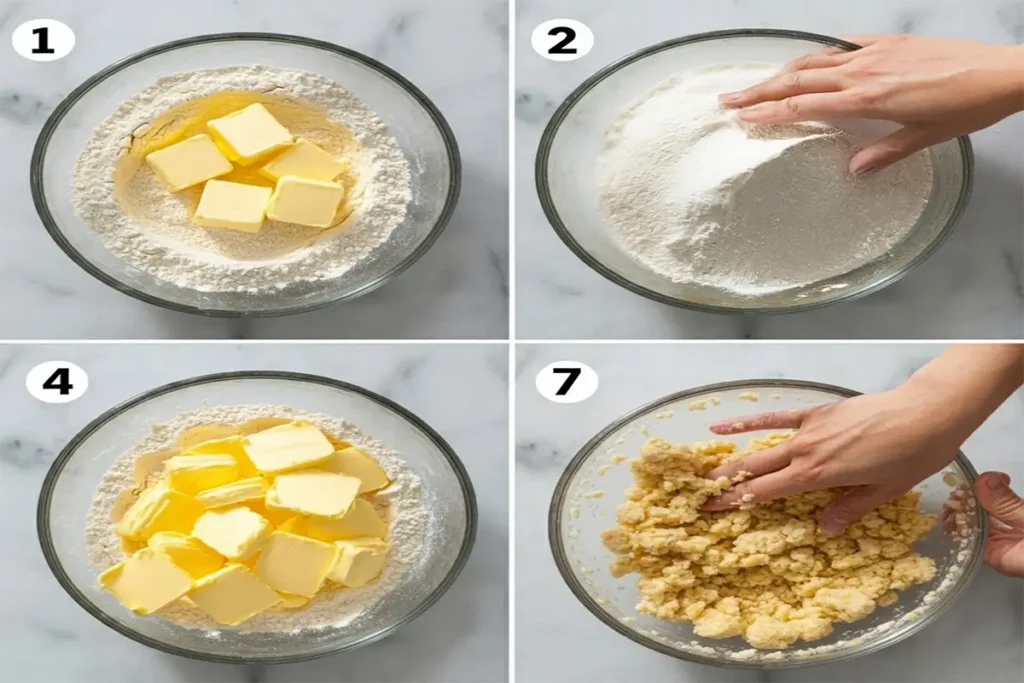
Instructions
- Combine Dry Ingredients: In a bowl, whisk together the gluten-free flour blend and xanthan gum.
- Cut in Butter: Add the cold, cubed butter and use a pastry cutter to blend until the mixture resembles coarse crumbs.
- Add Water: Slowly mix in ice water, one tablespoon at a time, until the dough forms a ball. If it feels too dry, add a tiny bit more water.
- Chill Dough: Wrap the dough in plastic wrap and chill for 30 minutes.
- Roll Out and Shape: On a lightly floured surface, roll out the dough. If it cracks, don’t worry; simply press it back together.
- Bake: Use as directed in your pastry recipe, baking until golden and flaky.
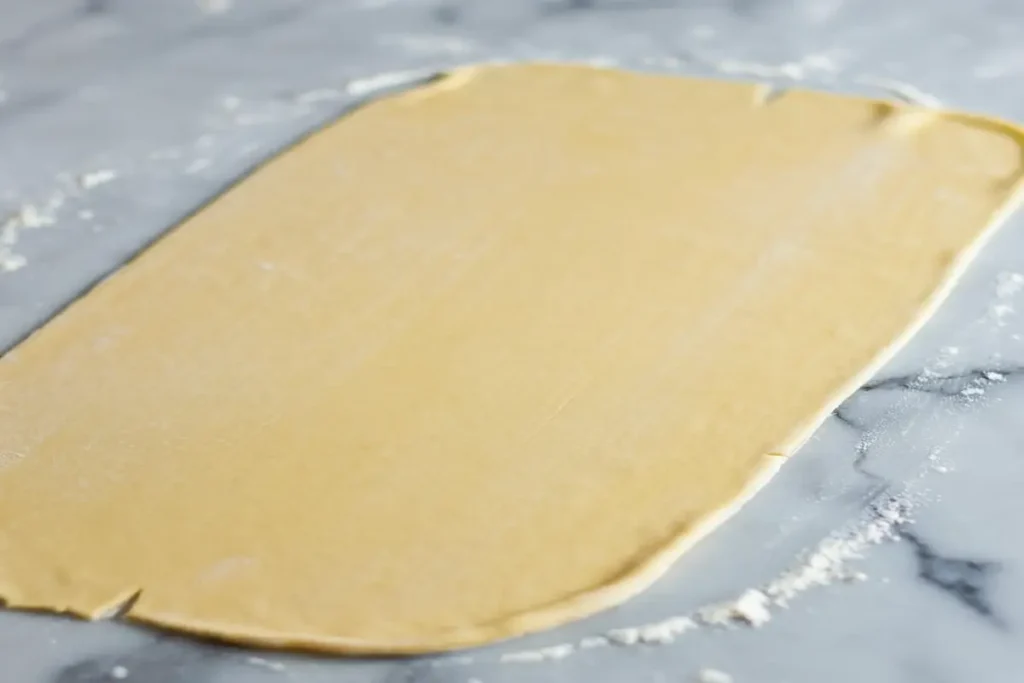
Variations of Gluten-Free Pastry Recipes
Sweet Pastries
For those with a sweet tooth, gluten-free pastry can be used for fruit tarts, Danish pastries, and turnovers. When making sweet pastries, consider adding a tablespoon of sugar to the dough, which enhances the flavor and helps with browning.
Tip: Fill with naturally gluten-free options like jams, custards, or fresh fruit.
Savory Pastries
Savory pastries, like veggie tarts or pot pies, are also within reach. Add a bit of garlic powder, herbs, or cheese to the dough for extra flavor. For fillings, roasted vegetables, cheese, or even cooked meats work beautifully with gluten-free pastry.
Tip: Use a parchment-lined baking sheet for easy transfer to the oven.
Pairing Your Gluten-Free Pastries with Fillings & Toppings
Classic Sweet Fillings
Sweet fillings elevate any gluten-free pastry. Here are some favorites:
- Fruit Jams: Berry or apricot jams add a burst of color and flavor.
- Custards: Use a vanilla or chocolate custard for a decadent filling.
- Fresh Fruit: Slice strawberries, blueberries, or peaches and add a sprinkle of sugar.
Savory Fillings to Complement Gluten-Free Pastry
For savory pastries, keep these fillings in mind:
- Cheese and Herbs: Blend soft cheese with fresh herbs like basil or chives.
- Vegetable Mixes: Roasted mushrooms, spinach, and bell peppers make a hearty filling.
- Pot Pie Filling: Classic chicken or veggie pot pie filling pairs perfectly with gluten-free pastry.
Storing and Freezing Gluten-Free Pastries
Proper Storage Techniques for Fresh Pastries
Store fresh gluten-free pastries in an airtight container at room temperature for up to two days. If they’re filled with perishable ingredients, refrigeration is recommended.
Freezing Gluten-Free Pastries for Later Use
You can freeze both raw and baked gluten-free pastries. For raw dough, wrap it tightly in plastic wrap and place it in a freezer bag. When you’re ready to bake, thaw the dough in the fridge overnight. Baked pastries should be wrapped in foil and stored in a freezer-safe container. Reheat in the oven for a few minutes to bring back the flakiness.
FAQs About Gluten-Free Pastry
Why does gluten-free pastry crumble easily?
Gluten-free pastries can crumble because they lack the elastic structure of gluten. Using binders like xanthan gum and handling the dough gently can help.
Can I use regular pastry recipes with gluten-free flour?
Not always. Gluten-free flours absorb liquids differently, so you may need to adjust other ingredients to get the desired texture.
What’s the best flour blend for gluten-free pastry?
The best blend usually includes a mix of rice flour, almond flour, and tapioca starch. Experiment to find what works best for your recipe.
Can I make gluten-free pastry vegan?
Yes, substitute butter with a vegan option like coconut oil or vegan margarine. Be aware that texture may vary slightly.
Heartburn Gluten-Free Pastries: What You Need to Know
Heartburn is a common discomfort that many people experience, and if you’re on a gluten-free diet, you might wonder how gluten-free pastries impact heartburn. Let’s dive into the connection between heartburn and gluten-free baking, and explore tips for enjoying delicious gluten-free pastries while keeping heartburn at bay.
Gluten Free Pastries Heartburn: Is There a Direct Effect?
Yes, gluten-free pastries can sometimes trigger heartburn, especially when they contain certain ingredients known to aggravate acid reflux. Gluten-free does not automatically mean heartburn-free, as ingredients like high-fat dairy, oils, and certain flours used in gluten-free pastries can still cause symptoms.
Here’s how it works:
- High-Fat Content: Many pastries, whether gluten-free or not, contain high amounts of butter or oil, which can relax the lower esophageal sphincter, leading to acid reflux.
- Acidic Ingredients: Some gluten-free pastries may contain acidic ingredients, like certain fruits or flavorings, that can increase acid production and cause heartburn.
- Portion Size: Large portions of any baked good can contribute to heartburn, as a full stomach puts pressure on the esophagus, increasing the likelihood of reflux.
Tips for Friendly Heartburn Gluten-Free Pastries.
- Opt for Lower-Fat Options: Consider recipes that use less butter or oil, or try dairy-free alternatives that are lower in fat. Coconut oil in moderation can be a gentler option for some.
- Watch Your Flour Choices: Certain gluten-free flours are easier on the stomach than others. Rice flour, almond flour, and oat flour tend to be gentler options compared to heavier flours like chickpea or soy.
- Avoid Triggers in Fillings: If you’re sensitive to acidic fruits like citrus or berries, skip them in your pastry fillings. Instead, try gentler options like apples or pears, which are generally less likely to cause reflux.
- Eat Smaller Portions: Instead of indulging in a large piece, try eating smaller portions of gluten-free pastries to reduce the risk of heartburn.
- Add Heartburn-Soothing Ingredients: Consider adding ingredients like ginger or chamomile, which are naturally calming to the stomach and can be incorporated into pastries in small amounts for a hint of flavor.
Heartburn Gluten-Free Pastry Recipe Idea
If you’re looking to make gluten-free pastries less likely to trigger heartburn, here’s a simple idea: a light gluten-free apple tart made with rice flour and almond flour, with just a small amount of coconut oil. Apples are gentle on the stomach, and the combination of mild flours helps keep it easy to digest.
Takeaway
While gluten-free pastries can sometimes trigger heartburn, small adjustments to ingredients, portion size, and even your choice of filling can make a big difference. With a few tweaks, you can enjoy the pleasure of flaky, gluten-free treats without the discomfort of heartburn. Try these tips next time you bake and enjoy your treats worry-free!
Conclusion: Crafting Gluten-Free Pastries Worth Sharing
Creating a delicious, flaky gluten-free pastry takes a bit of practice, but the reward is well worth it. By using the right flours, chilling your ingredients, and handling the dough carefully, you can achieve a pastry that’s every bit as delightful as traditional versions. Experiment with fillings and flavors to make each pastry unique, and enjoy the process of creating something truly special.
Whether you’re baking a sweet fruit tart or a savory vegetable pie, gluten-free pastries offer endless possibilities. Don’t be afraid to try new combinations, and remember, every pastry you make is another step toward mastering the art of gluten-free baking. Enjoy your culinary journey, and happy baking!


